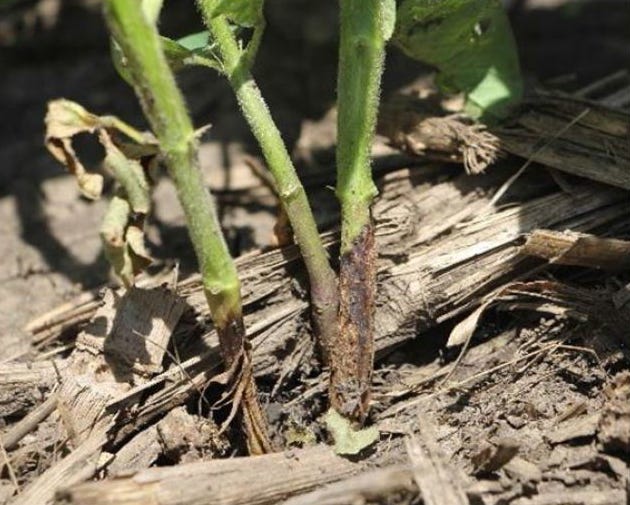
Soybean growers in southwestern Minnesota are encouraged to be on the lookout soon for overwintering soybean gall midges emerging from previous soybean fields.
University of Minnesota integrated pest management specialist Bruce Potter and Extension entomologist Bob Koch shared in a recent crop blog that the pest was found June 10 in eastern Nebraska. Soybean gall midge has been found in 95 counties in Nebraska, Iowa, Minnesota, Missouri and South Dakota over the last two years. In 2018, it was found only in Lyon County in Minnesota,
Last year, the pest was found in 13 Minnesota counties mostly along the southwestern portion of the state.
Both Potter and Koch are part of the regional Soybean Gall Midge Adult Emergence Alert Network, which provides the latest information on the midge.
Potter and Koch offered the following information on soybean gall midge:
Emergence soon. The adults emerge from the previous year’s soybean fields for approximately two weeks in June. They lay eggs in naturally occurring cracks or wounds in the lower stem of soybean plants where the larvae will develop. Earlier plantings of soybean are often more heavily infested.
A generation is completed in 25 to 30 days. The separate emergence periods of the adults from each generation is called a flight. There are an overwintering flight and at least two summer flights during the growing season.
Stem base eaters. The larvae are the damaging stage. The legless, maggot-like larvae are found beneath the surface of the soybean stem, typically at the base of the plants. Young soybean gall midge larvae are pale and become bright orange in the third instar. Mature larvae drop to the soil to pupate, with larvae of the last generation overwintering in loose cocoons in the soil.
Plant symptoms and larval infestations become visible after the V3 soybean growth stage. Larval feeding causes blackened areas at the base of the stem, with heavily infested areas of stems deformed and necrotic. Injury can result in stunting, wilting and death of soybean plants. Damaged stems can lodge or break easily.
In heavily infested fields, yield reductions of up to 100% on field edges have been recorded.
Identifying potential problem fields. Larvae and symptoms of their infestations in plants begin to appear a week or so after adult emergence. Look for infestations on edges of fields adjacent to fields that had soybean the previous year. Look for a dark discoloration at the base of the stem and wilting or dead plants. Stems of infested plants become brittle and can break near the soil. Peel back the outer layer of the stem and look for larvae.
Low density infestations are most easily found in August during the third larval generation.
 LOOK LOW: Soybean gall midge infestation is shown at the base of the soybean stem.
LOOK LOW: Soybean gall midge infestation is shown at the base of the soybean stem.

It is possible to mistake the non-pest species, the white mold gall midge, for soybean gall midge.
Management. Particularly in Minnesota, where known yield-limiting infestations have been rare, the detection of soybean gall midge adults does not necessarily mean you need to apply an insecticide.
Currently available seed-applied insecticides do not appear to provide adequate control. Extended adult emergence and multiple generations make insecticide control of adults with foliar applied insecticides difficult. Also, larvae inside the stems are protected from most foliar applied insecticides.
Research on the insecticide control of soybean gall midge is still very limited. Research from Nebraska in 2019 showed a potential yield benefit from pyrethroid insecticides applied within 10 days of adult emergence.
If adult emergence has been detected in Minnesota and that field or an adjacent field had a significant gall midge infestation in 2019, a grower might consider an insecticide.
Both Extension specialists cautioned against unnecessary pyrethroid insecticide applications since those would remove beneficial insects and cause problems with spider mites and soybean aphids later in the season.
Also, Potter and Koch ask that growers contact them if they suspect a soybean gall midge infestation. Reach them via email: Potter at [email protected] and Koch at [email protected].
About the Author(s)
You May Also Like






